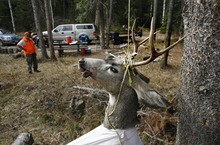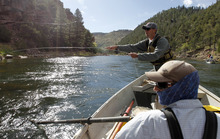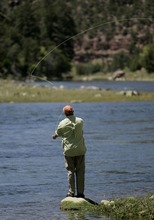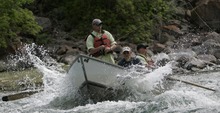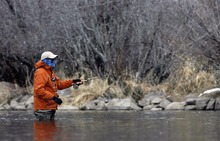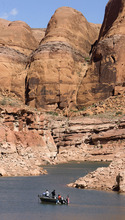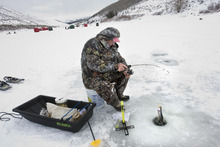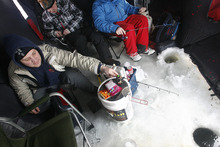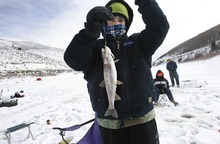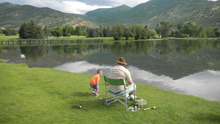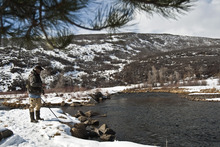This is an archived article that was published on sltrib.com in 2013, and information in the article may be outdated. It is provided only for personal research purposes and may not be reprinted.
Las Vegas • It wasn't many years ago that state and federal wildlife agencies thought they might need to find additional methods besides traditional hunting and fishing license sales and a federal excise tax to fund their programs.
After all, the number of hunters and anglers seemed to be on the decline. In a world filled with electronic gadgets, it seemed fewer people, especially young folks, were headed outdoors.
But, in two reports released Thursday by the National Shooting Sports Foundation and the Congressional Sportsmen's Foundation at the Shooting Hunting Outdoor Trade (SHOT) Show in Las Vegas, it appears those trends have reversed in recent years despite the slow economy.
According to Jeff Crane, president of the Congressional Sportsmen's Foundation, the number of hunters increased 5 percent from 2006 to 2011, while people buying fishing licenses increased by 11 percent during that same period.
Nationally, Crane said, there are 37.5 million anglers and hunters 16 and older, about the same population as California. Wildlife watchers also contributed $54.9 billion to the U.S. economy.
"Expenditures [for hunting] went up 55 percent from 2006," said Jim Curcuruto of the National Shooting Sports Foundation. "There were new hunters out there. This is during a time when the economy has been slow."
These figures are important to wildlife managers in states across the country because license sales coupled with a 10 percent federal excise tax on firearms, ammunition, boats and most fishing gear provide most of the dollars for wildlife conservation programs.
"Hunting, shooting and fishing are essential to the North American model of wildlife management," said Hannibal Bolton of the U.S. Fish and Wildlife Service.
Bolton's agency administers the Wildlife and Sport Fish Restoration Program, which celebrated its 75th anniversary in 2012.
Since its inception in 1937, the program has generated $14 billion for conservation from hunters and anglers and provided more than $700 million each year through the sale of hunting and fishing equipment to support habitat conservation and outdoor recreation.
By law, money spent on state hunting and fishing licenses or cash generated by the excise tax on equipment can't be spent on any other program. No state legislature or Congress has managed to raid funds for other purposes since its inception, according to the Association of Fish and Wildlife Agencies.
"Many people may not fully comprehend how important hunting and fishing are to the fabric of this country," said Crane. "Yet there are more people who hunt or fish than go bowling. [Hunter and angler] spending would land at number 24 on the Fortune 500 list."
The Congressional Sportsmen's Foundation report revealed many statistics on the importance of hunting and fishing to the economy.
For example, the $90 billion spent in 2011 on such pursuits was more than the combined global sales of Apple's iPhone and iPad the same year.
The $6 billion hunters spent on guns, ammunition and archery equipment was the same as the sales of bicycles in the United States in 2011.
The 15.5 million hunters in the United States over the age of six could fill every NASCAR track, National Footbal League stadium, National Basketball Association arena, Major League Baseball ballpark and National Hockey League rink in the United States more than twice. Anglers spent about $200 million on trip-related expenditures, than the combined 2011 revenues for all of the major professional sports leagues in the United States.
Twitter: @tribtomwharton By the numbers: Hunting and fishing in Utah
192,871 • Number of hunters
$549.5 million • Retail sales to hunters
12,471 • Number of jobs created by hunting sales
$62.4 million • State and local sales tax generated by hunters
413,568 • Licensed anglers
$489.7 million • Retail sales generated by anglers
7,208 • Jobs created by fishing industry
$49.7 million • State and local sales tax generated by anglers

















